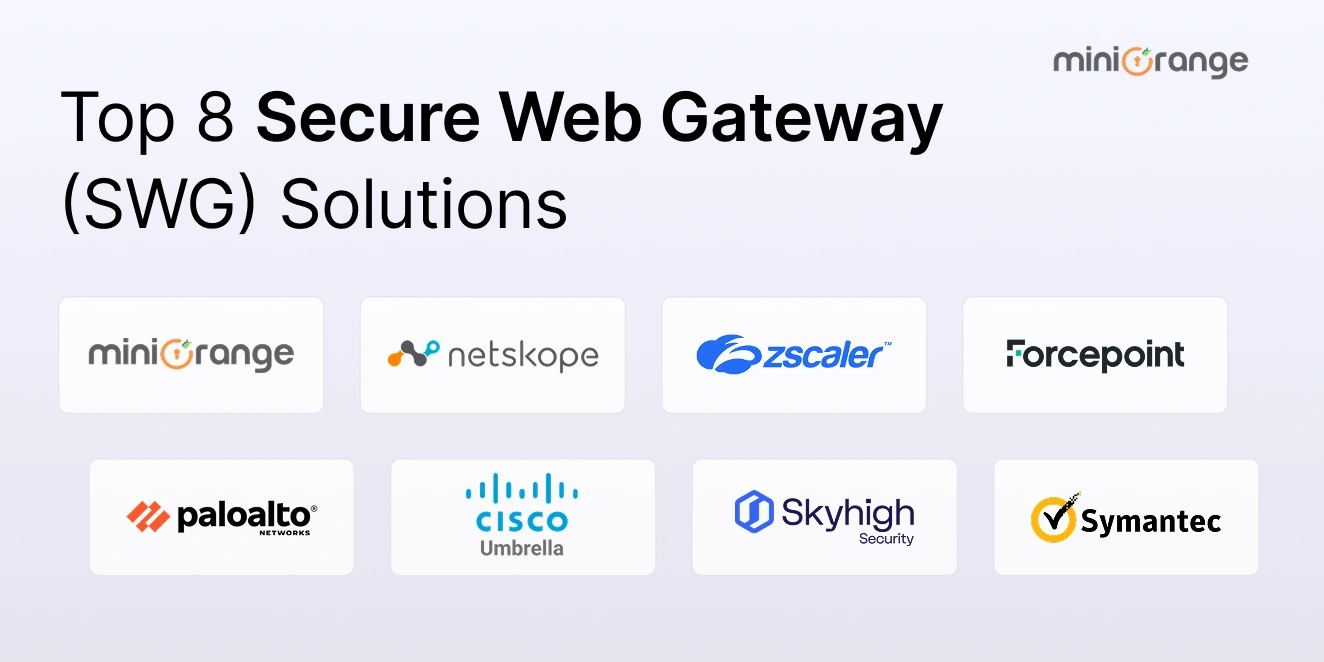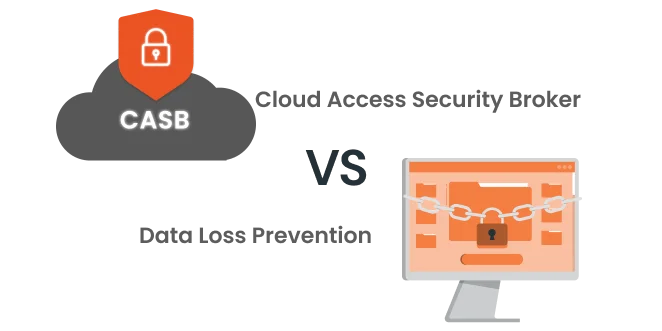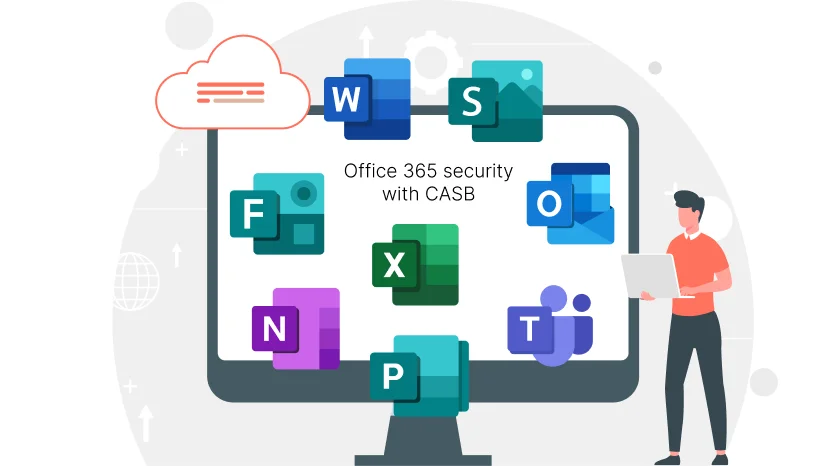Why You Need a CASB in 2025?
Businesses are using cloud apps every day, from CRM and HR systems to collaboration tools and file storage. However, many cloud apps available in the market right now are vulnerable to security and visibility issues.
According to a recent Gartner report, over 70% of organizations are dealing with unapproved cloud application usage by employees without IT consent. This introduces massive risk from accidental data leaks and compliance violations.
So, investing in the best cloud access security broker solutions can be the right thing to do to keep your business data and apps secure without slowing down productivity.
Let’s walk you through the top CASB solutions for 2025—comparing features, benefits, and what makes each one a fit (or mismatch) for your specific needs.
Top Cloud Access Security Broker (CASB) Solutions
1. miniOrange CASB
miniOrange CASB stands out among the best CASB tools in 2025 for offering enterprise-grade protection with an incredibly user-friendly setup. It comes with some handy features like data protection, user access control, app security and visibility, shadow IT discovery, context-aware access control, Data Loss Prevention (DLP), and real-time threat protection.
miniOrange CASB also integrates easily with platforms like Google Workspace, Microsoft 365, Salesforce, AWS, and other SaaS platforms, along with support for hybrid deployments (cloud + on-premise).
Best For: SMBs and mid-sized enterprises seeking strong security, flexibility, and affordability.
Key Features:
- Granular user access control policies
- Role-based access control
- Real-time activity monitoring
- Real-time Adaptive authentication
- File sharing controls
- Integration with SIEM & IAM tools
- Real-time risk scoring
- Compliance management (PCI, HIPAA, GDPR, DORA, ITAR, SAMA)
Pros:
- Budget-friendly pricing
- Easy deployment
- Wide range of cloud app integration
- Strong support for Microsoft environments
Cons:
- In the nascent stage. Steadily gaining name and recognition as giants like Netskope or McAfee.
2. Netskope
Netskope is one of the known CASB vendors for its cloud-native architecture and rich telemetry. Its Cloud Confidence Index (CCI) gives enterprises insights into multiple cloud apps, allowing them to craft specific policies. From data protection and risk visibility to malware defense, Netskope delivers a good spectrum solution.
Best For: Enterprises with hybrid or multi-cloud environments.
Key Features:
- Deep app risk intelligence
- Real-time inline and API-based inspection
- Granular DLP and policy controls
- Browser isolation and advanced threat protection
Pros:
- Advanced policy enforcement
- Excellent visibility across SaaS, IaaS
- Powerful integrations with SWG, ZTNA, SD-WAN
Cons:
- Higher cost than competitors
- Requires skilled setup and tuning
3. ManageEngine (Log360 with CASB)
ManageEngine's Log360 integrates SIEM, DLP, and CASB into a single, centralized platform. It is one of the top CASB providers, offering a go-to solution for those wanting consolidated visibility and compliance readiness. It’s particularly useful for teams that want to correlate CASB data with user behavior, security logs, and incident alerts in one pane of glass.
Best For: Mid-sized organizations seeking a unified security platform with SIEM, DLP, and CASB.
Key Features:
- Multi-cloud visibility
- Compliance management (HIPAA, PCI, GDPR)
- Real-time alerting
- Customizable security dashboards
Pros:
- Centralized monitoring
- Cost-effective for what it offers
- Easy integration with enterprise systems
Cons:
- CASB features are evolving and may lack advanced DLP features seen in dedicated tools
4. Forcepoint CASB
Forcepoint is among the best CASB software as it offers a user-centric approach to CASB products. It focuses heavily on behavior analytics and real-time monitoring, helping detect abnormal activities and potential insider threats before damage is done. Its CASB offering blends smoothly with other Forcepoint tools like Web Security Gateway, DLP, and NGFW, making it an option for companies already invested in the Forcepoint ecosystem.
Best For: Organizations seeking behavior-based threat protection and granular control.
Key Features:
- Real-time risk scoring
- Shadow IT visibility
- Integrated threat intelligence
- App risk assessment and control
Pros:
- Strong behavior analytics
- Easy-to-understand dashboards
- Focus on human-centric security
Cons:
- Setup can be complex
- Regional support can vary
5. McAfee Skyhigh Security CASB
McAfee’s cloud access security broker CASB solution offers multi-mode deployment options, from API to reverse proxy. Its comprehensive compliance tools, DLP, and threat analytics have made it a favorite in regulated industries like finance, healthcare, and government.
The dashboard gives insights, though with a bit of a learning curve. But once configured, it becomes a central command center for cloud governance and security.
Best For: Enterprises focused on compliance and detailed analytics.
Key Features:
- Policy enforcement across SaaS, IaaS, and PaaS
- User and entity behavior analytics (UEBA)
- Custom compliance templates
- Integration with SIEM, EMM, and ticketing systems
Pros:
- Mature feature set
- Extensive compliance and reporting tools
- Global policy control
Cons:
- Steep learning curve
- Sluggish performance with heavy logs
6. Palo Alto Networks Prisma Next-Gen CASB
Palo Alto Networks CASB is part of its Prisma Access and SASE ecosystem, one of the top CASB solutions for modern businesses deploying across multi-cloud environments.
It’s designed with a security-first mindset to identify, analyze, and mitigate risk across SaaS platforms.
Best For: Organizations needing tight integration with SASE and Zero Trust frameworks.
Key Features:
- Inline and API mode control
- DLP and threat detection with ML analysis
- Cloud Security Posture Management (CSPM)
- Real-time app discovery and risk profiling
Pros:
- Tight integration with other Palo Alto tools
- Ideal for Zero Trust strategies
- Full-spectrum visibility
Cons:
- Higher pricing tier
- More enterprise-focused than SMB-friendly
How to Choose the Best CASB Solution
Choosing a CASB isn’t just about brand recognition—it’s about fit. Here’s what to look for in CASB functionality:
1. Deployment Mode Understand whether an API-based or a hybrid deployment suits your infrastructure. API modes offer easy setup, while proxy methods provide deeper control and inline protection.
2. Visibility into Shadow IT Your CASB security solution should reveal which apps your users are accessing—sanctioned or not. Shadow IT is a top cause of breaches and compliance violations.
3. Data Loss Prevention (DLP) Look for deep content inspection features and automated enforcement based on regulatory frameworks like GDPR, HIPAA, or PCI-DSS.
4. Threat Protection and UEBA Advanced solutions offer user behavior analytics (UEBA), risk scoring, and anomaly detection that flags unusual user activity before damage occurs.
5. Pricing and Scalability Smaller companies may prioritize price and simplicity, while enterprises need scale and customization. Evaluate vendors based on your growth plans.
Conclusion: CASB Is a Must-Have in 2025
In 2025, cloud security is a business imperative. With everything from sensitive client files to internal IP now flowing through SaaS and IaaS, CASB tools provide the visibility, control, and protection that modern teams need.
Whether you’re a lean IT team looking for cost-effective control, a mid-market business wanting an all-in-one dashboard, or a large enterprise seeking total telemetry, there’s a solution out there tailored to you.
contact us at uemsupport@xecurity.com to grab a customized solution for your unique business use case.






Leave a Comment